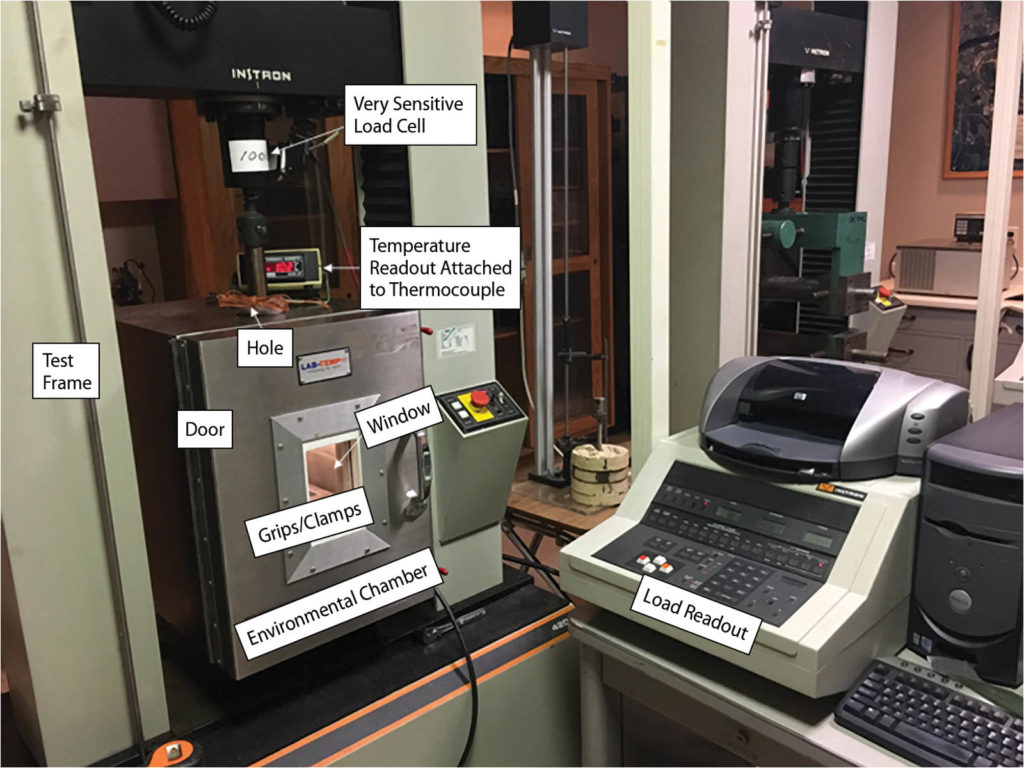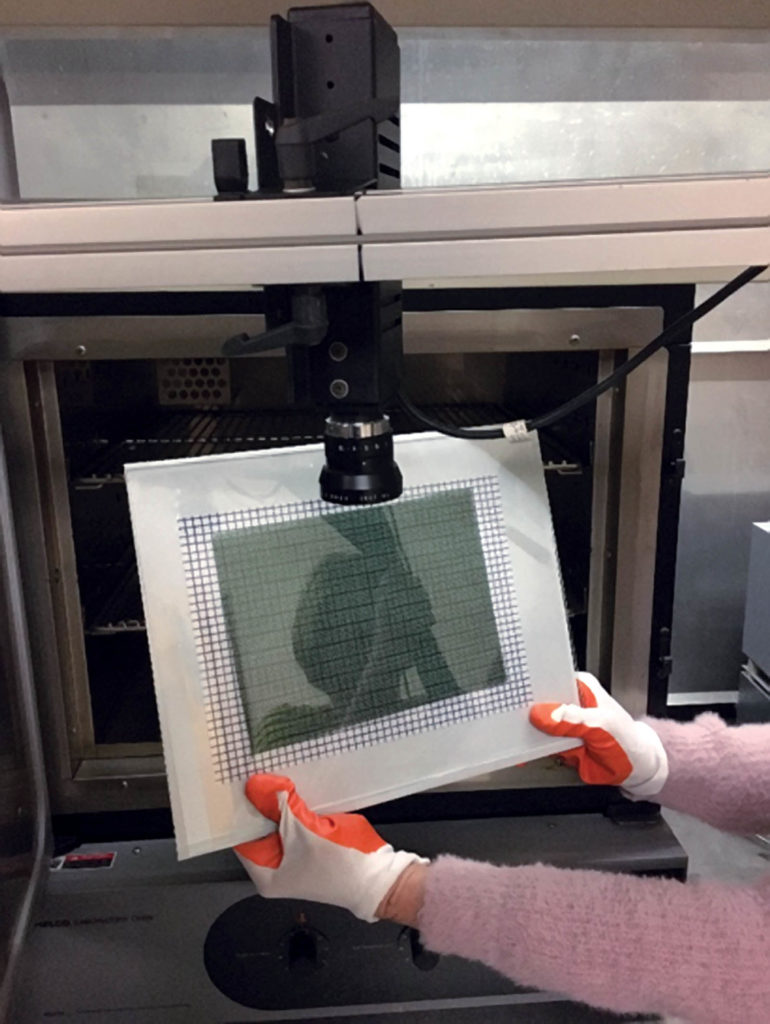An essential aspect of geosynthetics is that they function well over a large range of temperatures in either buried or exposed environments. There has been much work in this area; see Giroud and Morel (1992), Koerner and Koerner (1995 and 2006), Lord, Soong and Koerner (1995), and Tsuboi, Imaizumi and Miyaji (1998). Most of the past work has been focused on geomembranes and relates to dimensional stability (ASTM D1204 Test Method for Linear Dimensional Changes of Nonrigid Thermoplastic Sheeting or Film at Elevated Temperature) and linear coefficient of expansion and contraction (ASTM D696 Test Method for Coefficient of Linear Thermal Expansion of Plastics). This dimensional change with respect to temperature variations manifests itself in wrinkles, creases and shear stress imposed via differences in friction through the cross section of the geomembrane, puncture stresses and stress concentrations around rigid boundaries (batten strips, pipe boots, etc.).
However, beyond external stresses, we are interested in the internal or residual stresses locked into a material upon manufacture. These stresses can be present even after all external loading forces have been removed. They are a result of the material obtaining equilibrium after it has undergone plastic deformation.
Deformation due to issues such as residual stress, bending and shrinkage can dramatically affect a geosynthetic’s quality and functionality. Residual stresses for plastics are caused by heat and flow issues. A given geosynthetic’s internal residual stress distribution is reported to form tensile stress within the material. Residual stress originates during solidification even without external force. It can manifest itself under long-term usage or while exposed to changes in temperature or other environmental conditions. Residual stress can be a factor of deformation based on the plastic’s viscoelasticity characteristics. This deformation can cause changes in dimensional stability and, in severe cases, may cause damage to the material. Thus, residual stress is an important factor affecting performance. As such, it is necessary to set up both optimized conditions to minimize residual stress and reliable methods to measure it.
The reasons for residual stress are detailed below:
- Deformation due to manufacturing speed
- Deformation due to external stresses while the materials are in a viscous state
- Heat deformation due to large temperature variations between core and skin of the material
- Deformation due to uneven cooling speed caused by shape or irregular thickness
- Mechanical deformation (weaving, knitting, drawing, etc.) after the material is cooled
Residual deformation consists of intramolecular and intermolecular deformation. At normal temperatures, stress occurs on the intramolecular level. However, stress can also occur when the material thaws or soaks in chemicals. Residual deformation can occur in both crystalline and amorphous materials.
Reasons for residual stress and methods of reducing it in plastics is widely divided into micro and macro stresses. Micro stress occurs when a polymer’s molecular orientation is not released but instead frozen during manufacture. Macro stress, however, occurs because of internal pressure during cooling, uneven cooling speeds or external stresses.

Annealing is a general method to reduce residual stress. In theory, annealing temperature has to be higher than each plastic’s glass transition temperature so that stress relaxation might be rapidly achieved. However, this temperature level can also cause bending and warpage, so annealing must be done quickly within the maximum limit of dimensional change caused by stress relaxation.
There are many methods for measuring residual stress. Methods were once destructive, but preference is growing for nondestructive methods. Neutron diffraction, X-ray diffraction and a photo-elastic measurement of birefringence methods are available as nondestructive methods. However, the destructive methods of determining residual stresses by the hole-drilling strain gages or solution soaking component in different solutions at varying method temperature are still very relevant and the norm in the polymer industry. Please note that all the previous methods measure residual stress on a micro scale. By contrast, we are interested in residual stress on a macro scale post material fabrication.
The residual stress behavior of geosynthetics is a measure of load changes in a specimen as it is exposed to the temperature changes over a given time period. The force generated by this modulation of temperature can be compared to the ultimate tensile strength of a material. All of this becomes much more interesting when we deal with composite materials, of which the geosynthetic industry has many.

That said, the Geosynthetic Institute (GSI) is working hard on several projects to better understand how different geosynthetics react to changes in temperature. It was surprising to find that all geosynthetics do not expand when heated (even those made with olefin polymers). The equipment used for these projects are shown in Figures 1 and 2. As these projects progress, we will finalize GRI test methods, which hopefully will aid the industry to better understand the fundamental behavior of polymeric products used to solve civil engineering opportunities.
References
Giroud, J. P., and Morel, N. (1992). “Analysis of geomembrane wrinkles,” Jour. Geotextiles and Geomembranes, 11(3), 255–276.
Koerner, G. R., and Koerner, R. M. (1995). “Temperature behavior of field deployed HDPE geomembranes.” Proc., Geosynthetics ’95, IFAI, St. Paul, Minn., 921–937.
Koerner, G. R., and Koerner, R. M. (2006). “Long-term temperature monitoring of geomembranes at dry and wet landfills.” Jour. Geotextiles and Geomembranes, 24(1), 72–77.
Lord, A. E., Jr., Soong, T.-Y., and Koerner, R. M. (1995). “Relaxation behavior of thermally-induced stress in HDPE geomembranes.” Geosynthetics Int., 2(3), 626–634.
Tsuboi, M., Imaizumi, S., and Miyaji, H. (1998). “Effect of the temperature on tensile behavior of geomembranes.” Proc., 6th ICG, IFAI, St. Paul, Minn., 201–204.
 TEXTILES.ORG
TEXTILES.ORG


